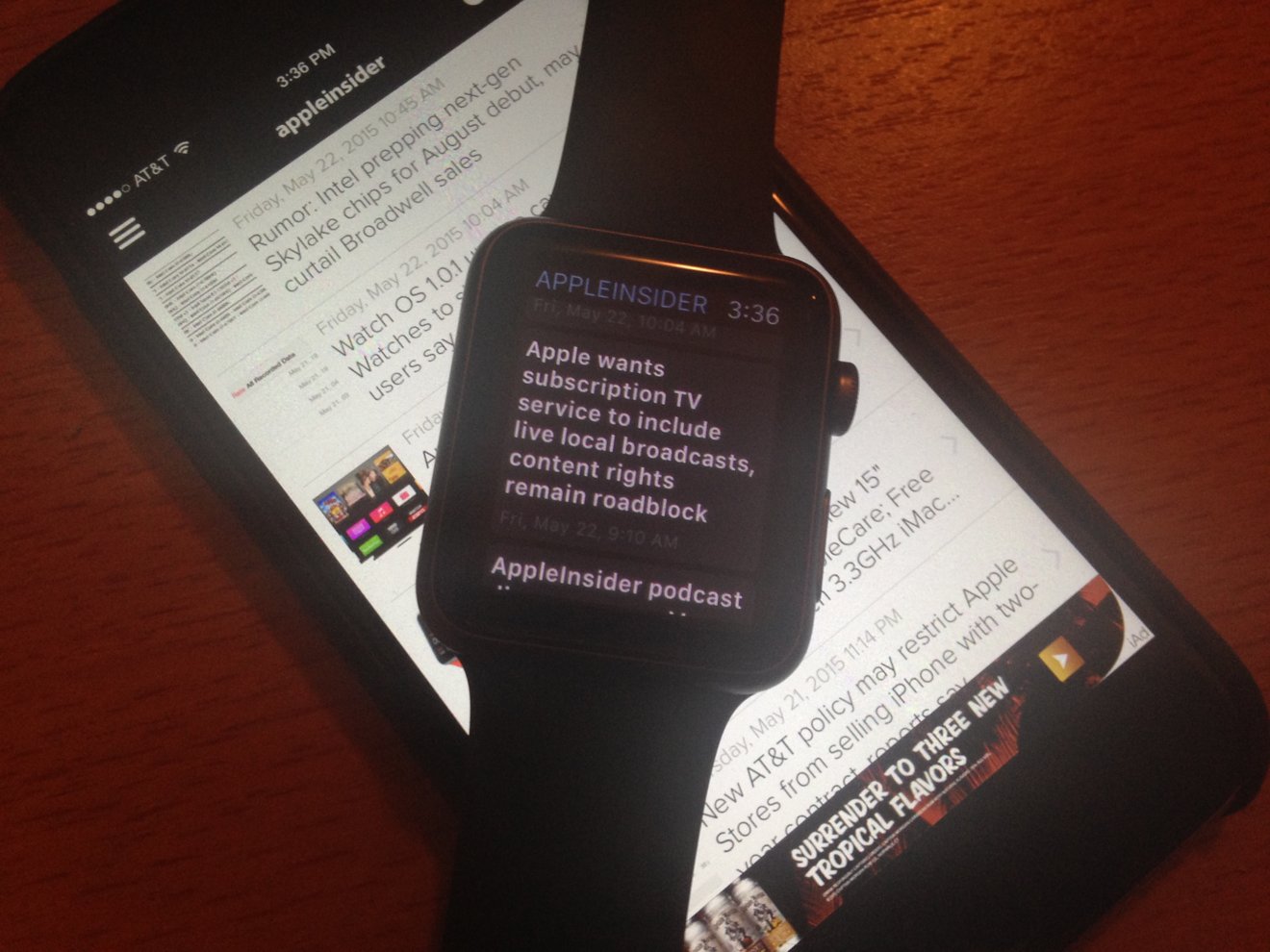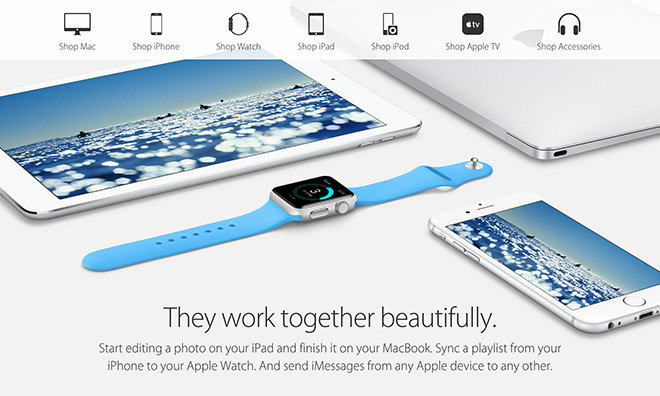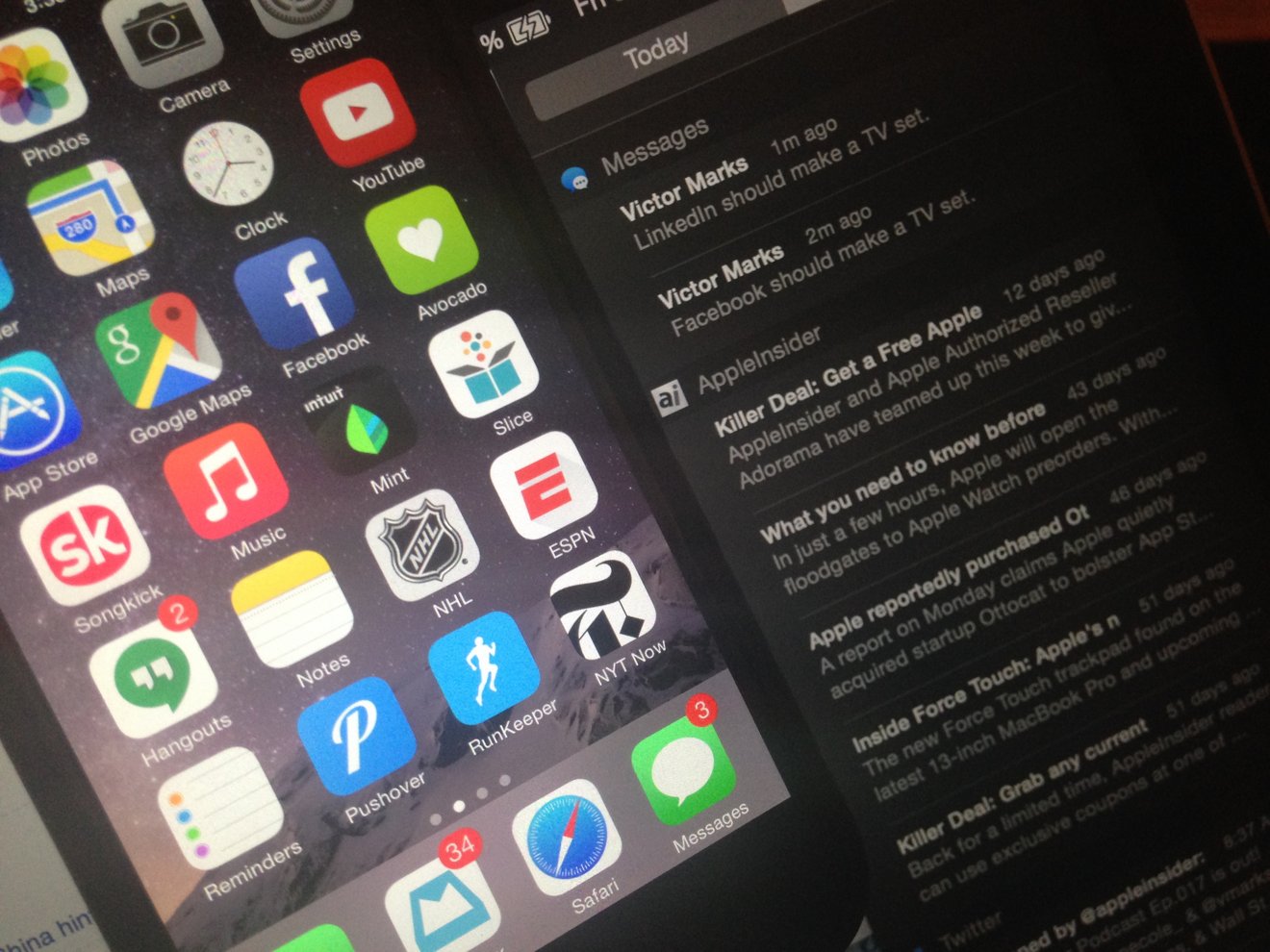Apple frequently introduces new technologies and features in a singular new product, then gradually brings them to other devices in its ecosystem, making for a more coherent user experience. With the recent launch of the Apple Watch, the company has begun offering smarter and more contextually aware locations — Â something we'd like to see on the rest of the company's platforms.
The Apple Watch must be tethered to an iPhone to fully function, and Apple takes full advantage of this with tight integration between the two devices. Perhaps the best example of this comes from notification alerts.
When a user's iPhone is locked and a notification is received, the user will get an alert on their Apple Watch, while the iPhone will remain silent with the screen off.
The iPhone and Apple Watch interact so seamlessly, it feels inevitable that the rest of Apple's ecosystem will soon follow.
If a user is actively using their iPhone, the alert will instead display on the iPhone screen, while the Apple Watch will remain silent.
In this way, notifications between the iPhone and Apple Watch are much smarter. Apple has devised a way to make sure that alerts are only received on one relevant screen.
The same can't be said for the rest of the company's ecosystem — Â yet. For example, if you're on a Mac and are logged into your Apple ID for iMessages, and a message is received, the user will receive alerts for a message on both their iPhone and Mac.
It's easy to see how Apple could adopt the philosophy used in the Apple Watch and apply it to the Mac with future updates: Using Continuity and Bluetooth Low Energy, Apple's platforms would know that when a user is actively sitting at their Mac, alerts should be sent to the computer screen.
Ideally, users would be able to only receive alerts on their currently active device, and could also respond to or cancel alerts from that device, regardless of platform.
In the event that the Mac is turned off, idle, or out of range, Apple's smart notifications would know to send the alert to the user's iPhone, or to their Apple Watch.
The same logic could also be applied to the iPad, where alerts are again received side by side with an iPhone or Mac. While a user is on their iPad, future Apple software could disable iPhone or Apple Watch alerts for relevant cross-platform applications.
Another cue that Apple could take from the Apple Watch is dismissing alerts. With the company's current platforms, dismissing an alert or opening a relevant app does not always affect identical alerts on different hardware.
Again learning from what it has created with the Apple Watch, the company should have alerts for connected applications sync between all devices within the ecosystem — and for all apps, not just some.
The Apple Watch also supports actionable notifications on the iPhone, even if the iOS app does not have an Apple Watch app. For example, notifications from the popular email client Mailbox allow the user to archive a new incoming message directly from their wrist.
Those same actionable notifications would work extremely well on a Mac, where users could quickly respond to alerts from their iPhone without having to take the handset off the table or out of their pocket.
Finally, there's also the issue of alerts for phone calls. This is an area where Apple's Continuity has, in some ways, become somewhat of an annoyance.
Anyone who has installed iOS 8 or OS X Yosemite knows that whenever receiving a phone call, all of their devices automatically begin to ring. In fact, the devices often continue to ring even after the phone call has been answered.
Generally speaking, users only need to be alerted on maybe one or two of their Apple devices for any type of notification, phone calls included. It's clear that in this respect, the rest of the Apple ecosystem has much to gain from the tight pairing of the iPhone and Apple Watch.
 Neil Hughes
Neil Hughes









-m.jpg)






 Charles Martin
Charles Martin
 Christine McKee
Christine McKee
 Wesley Hilliard
Wesley Hilliard
 Malcolm Owen
Malcolm Owen
 Andrew Orr
Andrew Orr
 William Gallagher
William Gallagher
 Sponsored Content
Sponsored Content








30 Comments
Um, notifications seem to work right on my Mac. If I'm sitting at my computer and someone messages me it pops up on my Mac first. If I click on it, it doesn't buzz me any where else. If I don't click on it, like I'm not paying attention to my screen, it goes away on my Mac and buzzes my watch. Perfecto!
[quote name="whoda" url="/t/186405/how-the-rest-of-apples-ecosystem-could-benefit-from-apple-watch-smarter-contextually-aware-notifications#post_2726695"]Um, notifications seem to work right on my Mac. If I'm sitting at my computer and someone messages me it pops up on my Mac first. If I click on it, it doesn't buzz me any where else. If I don't click on it, like I'm not paying attention to my screen, it goes away on my Mac and buzzes my watch. Perfecto![/quote] It varies though. The entire Continuity system still is a work in progress. There are times it works great, and times my iPad and iPhone seem like they don't even want to talk to each other. It seems more stable with 8.3 so hopefully it keeps improving.
Ideally, incoming messages and calls would be treated as if every user had a personal assistant and calls and messages would be given priority based on typical response patterns. Some calls could go straight to voice mail almost every time, while certain texts would override all incoming messages. Once our communications interact with us intelligently, there will be far less need to sift through dirt to find gold.
The exception is phone calls: both the iPhone and Watch will ring. And if your Mac is on and running Yosemite, that will ring as well.
Then, there's the [I] Grate [sp] Siri Face-off ...[/I] Consider, you're sitting around the family room, with several family members' iPhones and iPads plugged in -- charging or being used. You lift your wrist and to the Watch you say [I] "Hey Siri" ...[/I] There's an instantaneous cacophony of replies from Siri on all your iDevices -- each vying for your attention ... [I]"Pick Me" ... "No, Pick Me" ... "No, Pick Me" ... [/I]